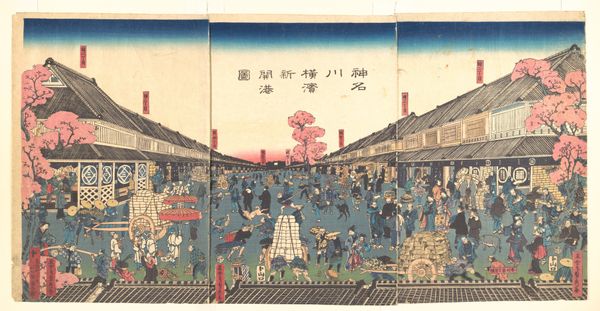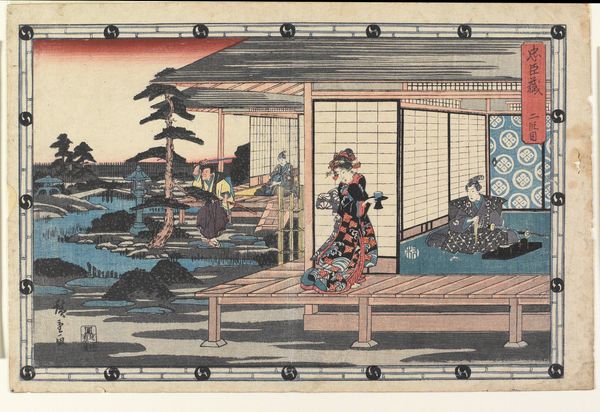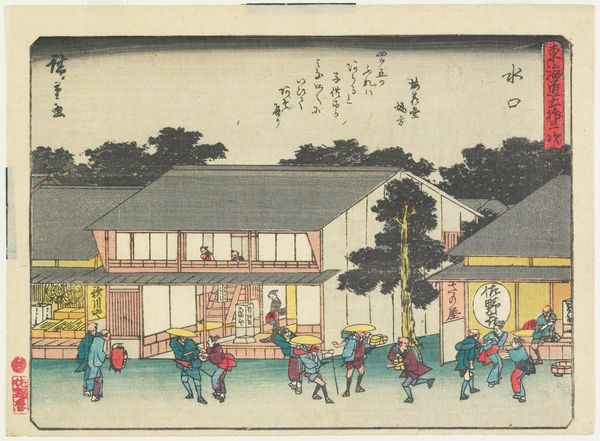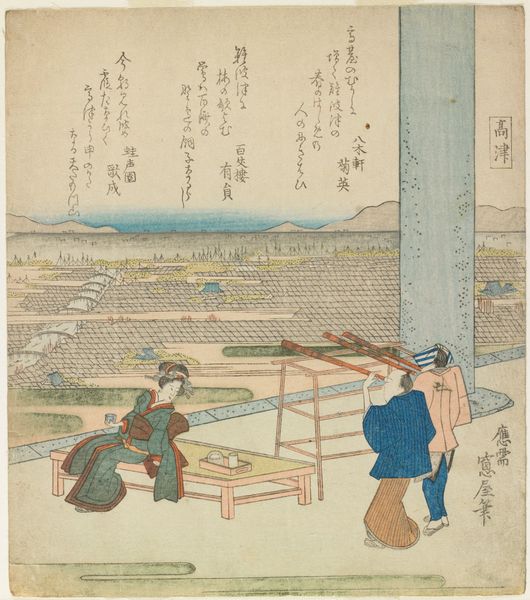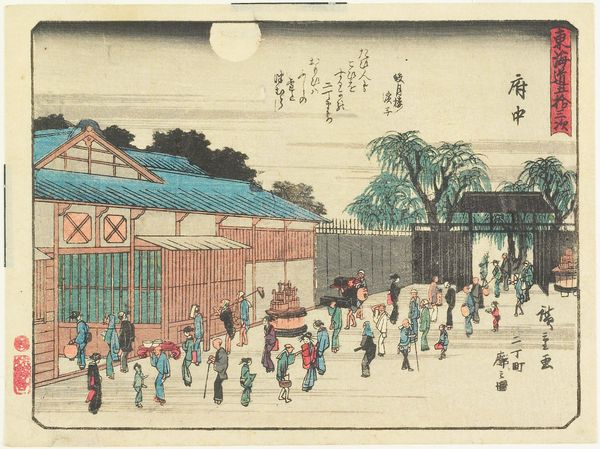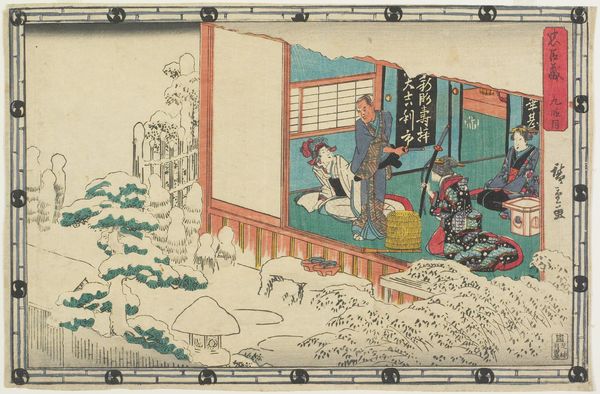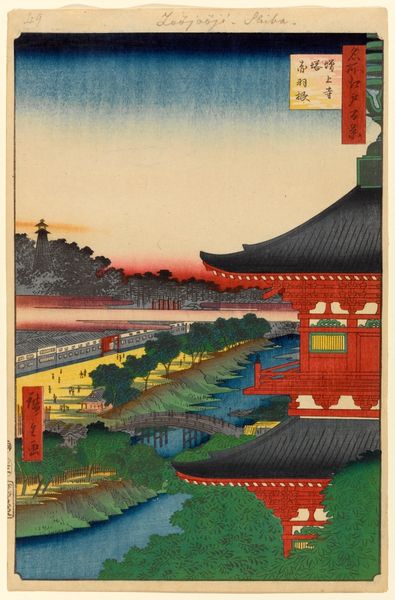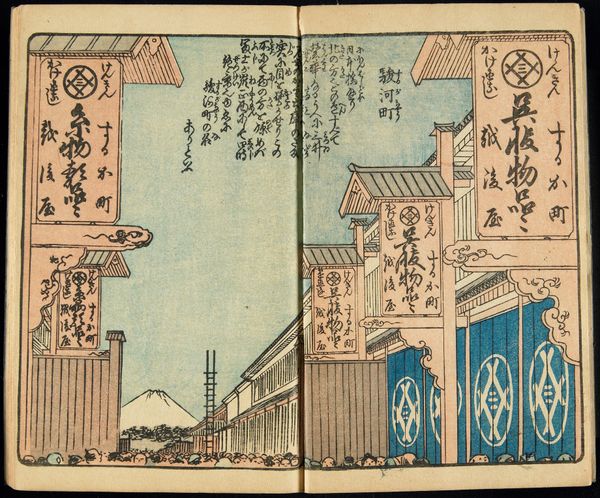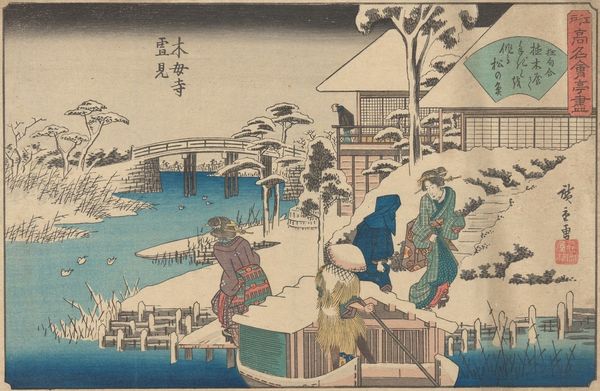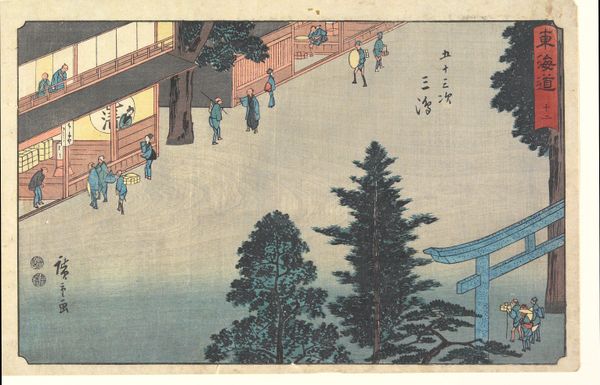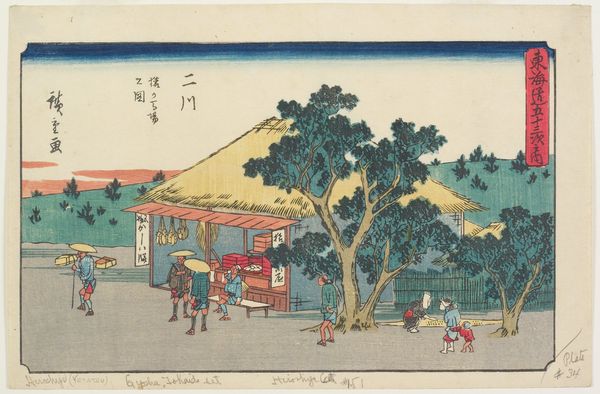
Two Views: Waterfront at Kaigan-chō, 3-chome and 4-chome, and the Entrance to the Gankirō Tea House 1860
0:00
0:00
print, woodblock-print
# print
#
asian-art
#
landscape
#
ukiyo-e
#
woodblock-print
#
cityscape
Dimensions: Image: 14 1/2 x 10 1/8 in. (36.8 x 25.7 cm)
Copyright: Public Domain
Editor: This woodblock print, "Two Views: Waterfront at Kaigan-chō, 3-chome and 4-chome, and the Entrance to the Gankirō Tea House" was created in 1860 by Utagawa Sadahide. The diptych arrangement, contrasting an elevated view of a cityscape with a ground-level tea house scene, is striking. I’m particularly drawn to the detailed rendering of everyday life, but I am curious, how do you interpret the work's contrasting settings within the socio-political climate of the time? Curator: The juxtaposition of the commercial waterfront and the leisure space of the tea house is key. Consider the political undercurrent. This piece was created at a time of significant social stratification. The elite merchant class and the geishas and performers in these tea houses had great influence in society, yet they were socially restricted. Sadahide places two separate but linked spaces side by side. Notice the arrangement and visual connection; what statements might Sadahide make about class and accessibility in urban society? Editor: That’s fascinating. The tea house seems almost like a rebellion against the strict societal norms, an assertion of cultural agency, while the cityscape portrays those in charge? Curator: Precisely! The tea house, a space for art, conversation, and pleasure, was often seen as subversive. In this work, Sadahide seems to be examining not only physical spaces but social roles and restrictions. Ukiyo-e prints like this became a voice of the populace at that time. Do you agree that a case can be made to interpret that both these locations had strong gender norms? Editor: Yes! Viewing it from the lens of gender, the tea house offered women certain opportunities. But I also realize they were often bound to roles that disempowered them, so, although opportunities are offered, we should note that they're not always beneficial. It completely reframes the narrative of enjoyment of beautiful, traditional places as somewhat exploitative. Thank you, that helps understand Utagawa's intent and depth in the context of societal pressures. Curator: And by recognising these contradictions, we enrich our appreciation. It forces us to confront the difficult realities intertwined with even the most appealing historical narratives.
Comments
No comments
Be the first to comment and join the conversation on the ultimate creative platform.

